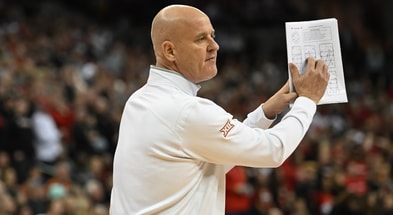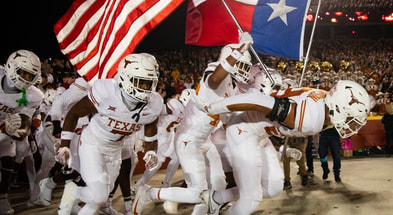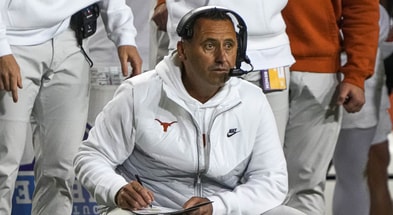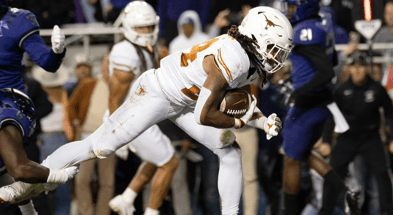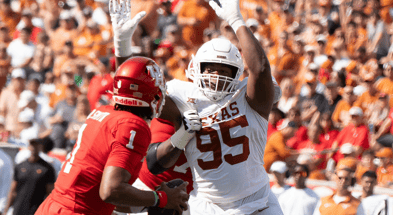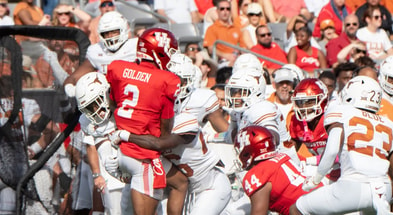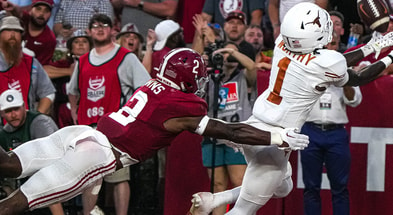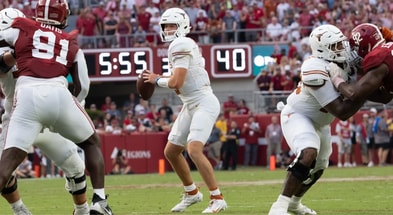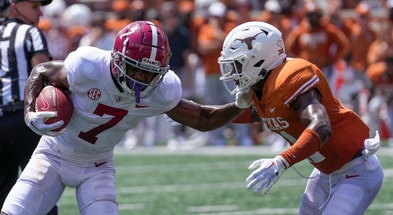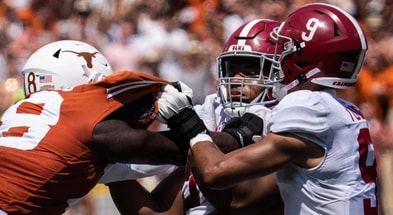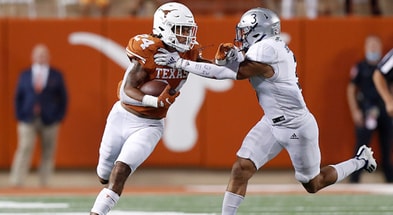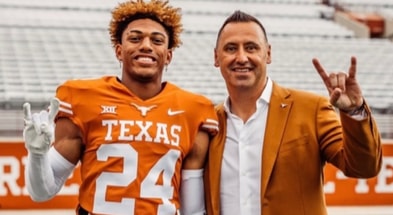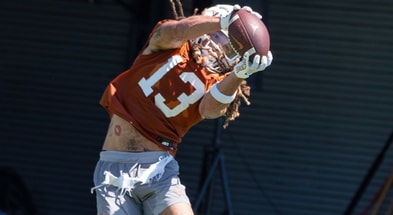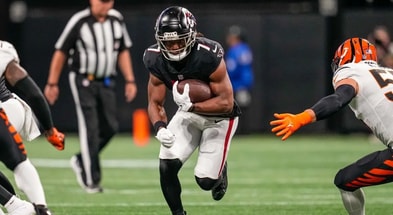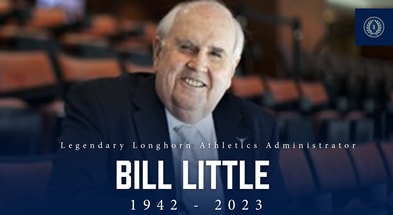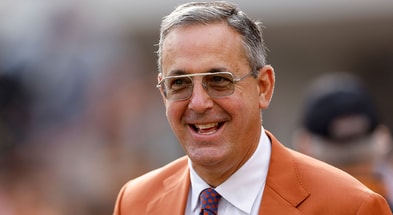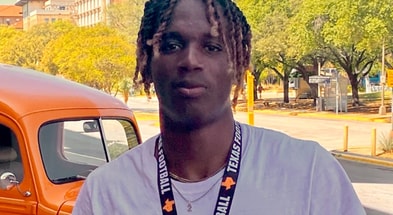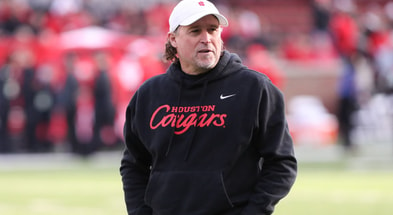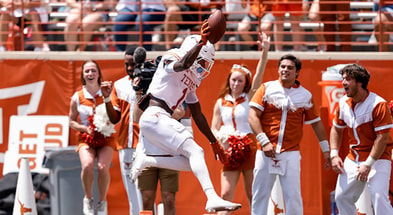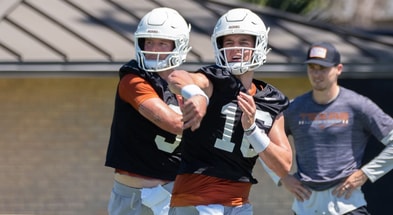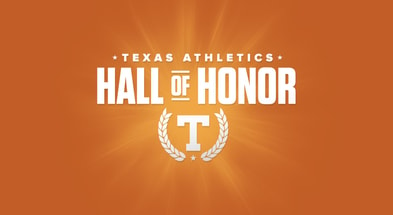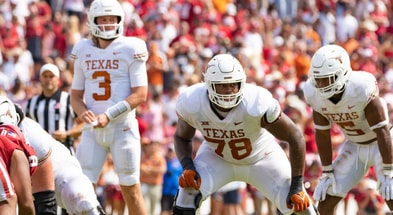Navigating The Uncharted Waters Of College Football
Before the 2021 college football season had even reached its conclusion, five of the ten best football jobs in the country were thrown open. That’s never happened before, but in this brave new world of college football free agency, one should hesitate before declaring that it will never happen again.
[Subscribe to Inside Texas right now and get a 7-day FREE trial!]
Consider the depths and unpredictable tides of these uncharted waters. It’s time to start coloring in the new maps.
1. Timing/Urgency
Either a sense of urgency today or a guarantee of regret tomorrow.
Never have so many significant college programs parted ways so quickly with a failing coach, or done so during the season.
I’m a proponent of doing now what you’ll have to do eventually and it seems that college football’s power brokers, once fearful, cautious, chummy, backward-looking, have largely resigned to the same perspective. Fans are squaring themselves to that new reality as well. Coaches have fully embraced their mercenary status, that shift reaching its ultimate realization when Urban Meyer turned it into a narcissistic art form.
Messy divorces that would have dragged on for years are now being severed with Henry VIII’s executional efficiency. Sentimentality shrugged off like a head on a guillotine. ADs are making sober assessments about where the head coach is today – not what he did two years prior. In turn, head coaches are learning to time their moves ahead of the posse.
LSU fired Ed Orgeron (“they reached a mutual agreement”) on October 17. Nineteen months prior, Orgeron coached the Tigers to the national title, leading a historically great team. He stumbled in 2020, doubled down on failure in 2021, and evidenced rather quickly that he could not handle success; he was a figurehead bolstered by two outstanding coordinators and an epic confluence of talent. Coach O couldn’t coach or hire his way out of his predicament. LSU let Orgeron finish out the season – a means of avoiding the interim head coach poison – which bought time and space to make their hire. They landed a proven veteran coach with a 113-40 record at Notre Dame.
Florida fired Dan Mullen despite season ending poll finishes of 6, 7, 12 in his first three years in Gainesville. However, late last year, Florida’s locker room fell apart, Mullen began to actively explore other options while demanding a contract extension, and the decline carried over into 2021 with a 5-6 record and a 2-6 performance in the SEC East. Florida didn’t dither and hope that Mullen would regain his mojo or discover a more pleasant or loyal personality. They cut bait and their brand was damaged far less than Mullen’s. Billy Napier (32-5 over his last three seasons at Louisiana) is their relatively unproven, but enticing new way forward. Napier was well rewarded for his own impeccable timing.
USC fired head coach Clay Helton in September after a 42-28 loss to a poor Stanford team. Helton started encouragingly in Troy (he went 21-6 in 2016/2017) but his ability level caught up to his on field record. Trojan faithful wanted Helton gone last year and he was a Dead Man Coaching in 2021. Mike Bohn made his move, appointed a true interim (making it clear that the interim couldn’t earn the job – the new breed of AD is learning) and bought the time and space to assess the landscape and land his guy. USC was much too late in making their change, but Bohn used that time effectively to marshal the money needed to land a whale. That he did.
The common hindsight analysis that getting rid of a failed leader can’t even be entertained without first securing the successor is a refrain of people who have never been responsible for anything. It is vastly preferable to have an elite successor waiting in the wings, but the world doesn’t always cooperate. Retaining bad leadership for “stability” is the province of fools. USC and LSU were well rewarded for wading into the murky depths of the unknown and Florida couldn’t retain a disinterested coach who had lost his program. Napier won’t do worse than 2-8 over his next ten SEC games.
Doubling down on the familiar bad because you fear the unfamiliar unknown is never rewarded.
2. Lateral Moves Reveal Hierarchy Of Opportunity
Everyone can power rank the best jobs and the lists may look mildly different, but it’s rare in college football for a successful head coach to leave the #8 job for #6. Or #6 for #5. It just doesn’t work that way. These are effectively lateral moves. Or so it was once believed.
USC and LSU may have more upside potential than Oklahoma and Notre Dame respectively, but established winning coaches just don’t jump from one top 10 program to another. Particularly when they’re well established and they are still in good favor. Notre Dame hasn’t had a head coach take another college head coaching job of their own accord since 1907. When was the last time Oklahoma lost a head coach where it wasn’t the Sooner AD showing them the door? Successful Sooner coaches either leave in scandal (Switzer) or to be network analysts (Stoops, Wilkinson). Not to take another elite college job.
Perhaps we are learning about the small differences in hierarchy. Or, at minimum, the willingness of coaches to boldly flee what they perceive as a limited upside, or proactively dodge a cultural reckoning brewing in the locker room.
To say that Notre Dame and Oklahoma were blindsided is an understatement. They should have been. These are uncharted waters. But they’re being charted now. Pay attention.
3. Money
Inflation isn’t just being felt at the gas pump and the grocery store.
The rumors are that Lincoln Riley is making 100 million over 10 years in South Central and will have an amazing array of benefits. Needless to say, he won’t feel a cost of living differential.
Kelly will reportedly earn 95 million over 10 years in Baton Rouge. He was reportedly making just over 5 million per year at Notre Dame.
When Texas A&M locked up Jimbo Fisher through 2031 for around 9 million per year, the reactions varied, but Aggie desperation underpinned much of the analysis. Maybe so, but it really was the beginning of a shifting set of rules. Unlike Jimbo Fisher, Kelly and Riley weren’t fleeing a declining program, but the sheer scale of their compensation and length of commitments reconfirm the total transformation of college football markets. The message now is: if you find your guy lock him up forever. Because someone is coming to money whip ’em.
But buyer beware. That argument could have been made on behalf of Dan Mullen in 2020. In fact, Mullen demanded an extension at the end of his three game losing streak in 2020 and Florida administrators blinked with a three year extension of his 2023 expiring in June of 2021, locking him up through 2026. Where would Florida be if they’d locked up Mullen for a full decade in early December of 2020 when the Gators sported a 8-1 record, were ranked #6 in the country, and were highlighted as the hot team no one wanted to face in the postseason?
Mullen promptly went 5-9 over his next 14 games. 2-8 against SEC opponents. 2022 recruiting has been a disaster. But he still managed an extension in the midst of it.
The Gators’ current buyout of 12 million dollars is steep. Imagine if that buyout number were 25 million with a decade commitment. Paralyzing.
The tension between Points #1 and #3 is massive.
4. Program History vs. Current Opportunity
Notre Dame is the most storied program in college football history. This is not particularly debatable, even by those who hate the Domers. It is also not that controversial to offer that the best SEC jobs are better gigs than South Bend if a coach wishes to position himself for the national title by landing the bluest of blue chips. Those jobs come with expectations, political treachery, and high stakes, but nothing a ten year contract won’t remedy.
Oklahoma is a far more successful program than USC over the last decade by any objective measure and their commitment is unquestioned. The entire state and school seemingly exist to support the Sooner football program. USC’s conference spends more time grappling with appropriate gender pronouns and how often to test healthy vaccinated 21 year olds than figuring out how to reconcile big time athletics to their university missions. And California college sports fans are notorious front runners. But a proud Trojan program with a profound native recruiting base starting two minutes from its campus with almost no local competition in recruiting grounds as fertile as Texas or Florida is more valuable than a school that starts its recruiting focus a three hour drive south and then gets on planes to find the rest. It doesn’t hurt that assembling an undefeated season in the Pac 12 looks a lot easier than in Oklahoma’s future conference alignment.
LSU and Florida can’t compete with Notre Dame or Oklahoma’s history. Nick Saban woke up the Tigers in the early 2000s and Steve Spurrier woke up the Gators in ’90. Notre Dame and OU are fabled programs, college fixtures for nearly a century.
But the reality of now trumps the mythos of history.
Welcome to the new waters.
